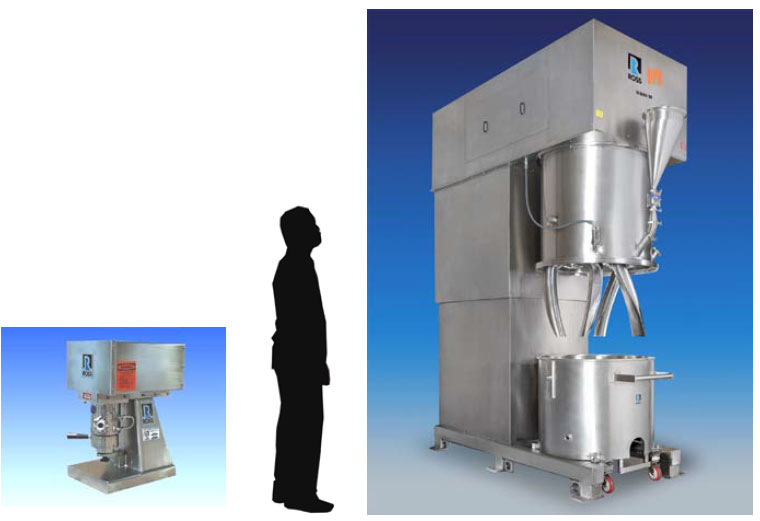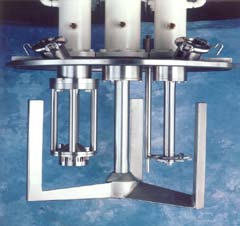Tech Report
Scale-up of batch mixers

Technology Brief
Successful scale-up of specialty mixing equipment often relies less on straightforward formulas and more on empirical data and experience. This bulletin discusses some practical tips and considerations useful in the scale up of batch mixing operations.
Objectives of mixer scale-up
Scaling up from a laboratory or pilot plant mixing operation requires that the physical and chemical properties of the product are duplicated at the full-scale plant level. It further requires that the desired outcome is produced within a reasonable amount of time. Below are some items worth considering before and during the scale-up phase of any batch mixing operation.
Some scale-up tips and considerations
- Choose scalable laboratory and pilot plant mixers. Avoiding product lines that do not offer a clear scale-up path reduces the risk of roadblocks in the future when it`s time to increase production.
- Maintain tip speed and agitator geometry. Account for longer mixing and heating times due to the unavoidable decrease in surface area to volume ratio and/or horsepower per unit volume.
- Perform mixer testing using your own raw materials and simulate your actual operating conditions as close as possible. Well-equipped manufacturers offer testing services that are supervised by mixing experts. Renting equipment for in-house trials at your facility is another option. To obtain reliable data for scale-up, a good rule of thumb is to test on a mixer no smaller than 10% of the capacity you are looking to eventually install.
- Determine the quantity of full and partial batches that can be made on a particular mixer model to accommodate fluctuations in product demand.
- Scaling up to a larger mixer with a change can design can further increase throughput and equipment utilization by enabling semi-continuous processing. For instance, a single mixer may be supplied with multiple interchangeable vessels that cycle through a sequence of charging, mixing, discharging and cleaning.
- If scale-up calculations point to a prohibitively large mixer size, consider alternative mixer technologies that can potentially supplement or even replace your current mixing procedure and accomplish the same end point in a fraction of the time. Examples include switching from a saw-tooth disperser to a rotor/stator mixer to improve dissolution rates, installing a solids induction system to accelerate powder wet-out and dispersion, utilizing an ultra-high shear mixer to finish emulsions much faster than a traditional rotor/stator, and other solutions that depend on the specifics of a particular application. By significantly reducing cycle time, you can work with more manageable batch sizes and still achieve the desired output volume per day or shift.
- Partner with a supplier with extensive experience in scale-up engineering. Even in ideal circumstances, scale-up will require some degree of tweaking to optimize your process in a larger volume.
Sample Application:

Aside from scalability, versatility is another useful characteristic to consider in selecting mixing equipment. A versatile mixer can accomplish a range of operating conditions for a specific application and can also handle a number of different applications.
For example, a bench-top Multi-Shaft Mixer is being used by a manufacturer to develop a full line of cosmetics and personal care products. This versatile mixer consists of three independently-driven agitators: a three-wing anchor, a saw-tooth high speed disperser and a rotor/stator mixer. Shear levels and flow patterns can be fine-tuned to produce a variety of gels, night creams, toothpastes, moisturizers, after shave balms, facial masks and liquid makeups. In their production floor, large scale versions of the lab mixer enable the company to produce the same range of products while easily adapting to changes in consumer demands and market trends.